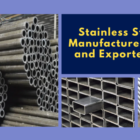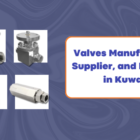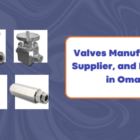Stainless Steel Tubes play a critical role across a variety of industries, from construction to pharmaceuticals. Their durability, corrosion resistance, and versatility make them essential components for numerous applications. At Mcneil Instruments, we pride ourselves on being a leading manufacturer of high-quality stainless steel tubing, providing tailored solutions to meet diverse industry needs. In this blog, we’ll explore the different types of stainless steel tubes we offer, the manufacturing processes involved, applications, and tips for choosing the right tubing for your specific requirements.
Mcneil Instrument is a leading manufacturer, supplier, and exporter of high-quality Stainless Steel Tubes in India. Our stainless steel tubes are renowned for their exceptional corrosion resistance, durability, and hygienic properties. We offer a wide range of stainless steel tubes to meet the diverse needs of various industries.
What are Stainless Steel Tubes?
Stainless steel tubes are pipes made of stainless steel, an alloy of steel containing a minimum of 10.5% chromium. This chromium content creates a protective oxide layer on the surface of the steel, making it highly resistant to corrosion.
Types of Stainless Steel Tubing by Mcneil Instruments
Mcneil Instruments offers a comprehensive range of stainless steel tubing, each catering to specific industrial demands. Below is a detailed look at the products we manufacture:
- 310 Stainless Steel Tubing: Known for its excellent resistance to oxidation and heat, 310 stainless steel tubing can withstand extreme temperatures. Ideal for high-temperature processing environments, it maintains strength even in fluctuating conditions.
- AISI 310 Stainless Steel Welded Tubing: A welded version of the 310-grade tubing, it provides superior oxidation resistance. It’s an economical choice for non-critical high-temperature applications, without sacrificing quality or performance.
- Grade 310 Stainless Steel Round Tubing: Round tubing made from 310 stainless steel is highly versatile and is often used in high-temperature industrial applications. It offers a combination of strength and resilience, ideal for tough environments.
- 317L Stainless Steel Tubing: 317L is known for its higher molybdenum content, enhancing its corrosion resistance, particularly in chemical environments. It’s ideal for handling acids and chlorides, ensuring reliability in harsh conditions.
- 317L Stainless Steel Round Tube: This round tube variant of 317L grade provides excellent durability and resistance to pitting corrosion. It’s commonly used in chemical processing and pharmaceutical industries for its strength.
- 304 Stainless Steel Tubing: A widely used grade known for its corrosion resistance and formability, 304 stainless steel tubing is a staple in industries ranging from food processing to automotive. It’s both cost-effective and reliable for everyday use.
- 304 Stainless Steel ERW Tubing: An Electric Resistance Welded (ERW) version of 304, it offers a smooth finish and enhanced weld integrity. Suitable for lower-pressure applications where aesthetics and performance are both important.
- SA213 TP316L Tubes: These tubes are made from 316L stainless steel, offering superior resistance to chlorides and marine environments. Perfect for applications where strength and corrosion resistance are critical.
- 316L Stainless Steel Square Tube: The square tube form of 316L is used in structural applications, offering both strength and a sleek aesthetic. Ideal for architectural projects, it provides a modern look with robust durability.
- 321 Stainless Steel Tubing: Featuring titanium as a stabilizer, 321 stainless steel tubing is resistant to carbide precipitation, making it suitable for high-temperature applications. It’s commonly used in the aerospace industry.
- 316 Stainless Steel Tubes: Known for its exceptional strength and corrosion resistance, 316 stainless steel tubes are perfect for applications exposed to seawater and harsh chemicals. It remains reliable under extreme conditions.
- 316 Stainless Steel Rectangular Tube: This rectangular form of 316 grade offers versatility in structural applications. It’s frequently utilized in construction projects requiring both durability and aesthetic appeal.
- Stainless Steel 316 Seamless Tubes: Seamless tubes provide a smooth, unbroken surface that’s ideal for applications requiring precision and cleanliness. These are often used in medical and pharmaceutical industries.
- 347 Stainless Steel Tubing: Stabilized with niobium, 347 stainless steel tubing is designed for high-temperature stability and resistance to intergranular corrosion. Ideal for high-stress environments in power plants.
- A270 Sanitary Stainless Steel Tubing: A270 grade is specifically designed for the food and beverage industry, offering a polished finish for sanitary applications. It meets strict hygiene standards, ensuring safety in sensitive environments.
- Stainless Steel Square Tube: A versatile product, the stainless steel square tube is used in both decorative and structural applications. It’s known for its aesthetic appeal while maintaining strength and stability.
Stainless Steel Tube Grades
Below is a table outlining some of the most common stainless steel tube grades and their unique properties:
| Grade | Key Features | Applications |
| 304 | Excellent corrosion resistance, affordable | Food processing, automotive, general |
| 304L | Low carbon, great for welding | Chemical processing, welded structures |
| 310 | High-temperature resistance, oxidation-safe | Furnace parts, high-temp applications |
| 316 | Superior chloride resistance | Marine, chemical, pharmaceutical |
| 316L | Low carbon version of 316, for welding | Marine, chemical, construction |
| 321 | Titanium stabilized, heat-resistant | Aerospace, heat exchangers |
| 347 | Niobium stabilized, handles extreme heat | Thermal processing, power plants |
| 904L | High alloy, acid-resistant | Acidic environments, chemical storage |
Tube Manufacturing Processes of Mcneil Instruments
Stainless steel tubes are manufactured through various methods to meet specific industry requirements. Here’s a flowchart showcasing the common processes involved:
Raw Material Selection → Tube Forming (Seamless/Welded) → Heat Treatment → Sizing and Shaping → Surface Treatment (Polishing/Passivation) → Quality Inspection → Packaging
Tube Applications
Stainless steel tubes find applications in a wide range of industries due to their versatility and durability. Some of the key applications include:
- Construction and Architecture: Used in structural frameworks, handrails, and decorative elements due to their strength and aesthetic appeal.
- Food and Beverage: Essential for sanitary piping systems that require cleanliness and corrosion resistance.
- Chemical Processing: Utilized for handling aggressive chemicals and harsh environments, providing safety and durability.
- Automotive: Frequently used in exhaust systems and other critical parts where high strength is needed.
- Medical and Pharmaceutical: Seamless tubes are ideal for precision applications, ensuring hygiene and compliance with industry standards.
Tube Standards and Certifications
To ensure the highest quality, Mcneil Instruments adheres to international standards and certifications for stainless steel tubing. Some of the key standards include:
- ASTM A312 – Standard specification for seamless and welded austenitic stainless steel pipes.
- SA213 – Standard for seamless ferritic and austenitic alloy steel boiler, superheater, and heat-exchanger tubes.
- A270 – Standard for sanitary tubing in food and beverage industries.
- ISO 9001 – Quality management system certification, ensuring consistent product quality.
How to Choose the Right Stainless Steel Tubing for Your Needs
Choosing the right stainless steel tubing depends on several factors, including the environment, application, and budget. Here are some key considerations:
- Corrosion Resistance: Select a grade that offers the level of corrosion resistance you need. For marine environments, 316 or 316L is a top choice.
- Temperature: For high-temperature applications, opt for grades like 310 or 321 that offer stability under heat.
- Strength and Durability: Consider the pressure and stress the tubing will endure, choosing thicker walls and stronger grades if necessary.
- Aesthetics: If appearance is important, polished and seamless options provide a superior finish.
- Cost: Balance your needs with budget constraints, opting for a grade that offers the best value for your application.
Conclusion
Stainless steel tubes are a vital component in modern industry, offering unmatched versatility, durability, and performance. At Mcneil Instruments, we are committed to delivering top-quality stainless steel tubing that meets your precise needs. From high-temperature resistant 310 stainless steel to corrosion-resistant 316 and versatile 304, our product line is crafted to cater to every requirement.
Contact Mcneil Instrument today to learn more about our stainless steel tube offerings and how we can assist you with your specific needs.






